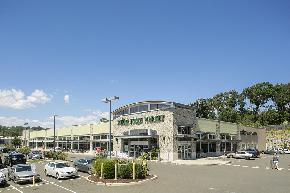 Photo by Shutterstock
Photo by Shutterstock
If landlords aren’t having conversations with their tenants about reopening, it’s already too late, says Ross Forman, managing director of the business advisory firm BDO.
“They should be reaching out to every single tenant regardless of whether that tenant contacted them or not,” Forman says. “That [the tenant] is your greatest single asset. Right now, it’s not the bricks and mortar. That is meaningless without the tenants paying the rent.”
Forman urges landlords to ask what tenants need. Talk to them about how you’re handling things such as virtual floor tours, the execution of documents, cleaning, deliveries (including food) and amenities. Think about limiting amenities and reconfiguring elevators to restrict contact.
“Tell them about your plans,” he says.
Forman says it’s important to emphasize digital solutions requiring no human interaction that you will be offering. If cash management and capital expenditures are decentralized, Forman argues that now, when watching investments is paramount, is the time to unify them.
With the massive dislocation in the market, it’s just a matter of time until business shutter, and tenants leave. Landlords, especially in the B and C space, need to be prepared for that.
“Those owners have got to start looking at how where they are going to compete or if they need to diversify their portfolio,” Forman says. “The time to look at repositioning those buildings is now. You’re not going to be able to compete with these newer buildings or brand-new buildings for that matter.”
Workforce reentry, even if it is on a limited basis, should also be a focus for landlords.
If tenants are thinking about bringing workers back to the office, landlords should be sending out employee surveys, Forman says. “This is not the survey to say, ‘Hey, how are you doing?’” Those should have already been done. This survey says, ‘What do we need to do to make you comfortable to come back and work at your office?’”
The goal is identifying their concerns and what has and hasn’t worked in a remote environment. If it makes financial sense, landlords may want to think about offering transportation and childcare options, according to Forman. “Find out what PPE [personal protection equipment] they would need or expect you to be providing,” he says.
Forman says landlords and tenants should also be prepared for COVID-19 to come back later in the year. “They should make the assumptions there is going to be a rebound,” he says. “What are they going to do when that happens? They need to be ready for that in this planning process.”
Landlords can collaborate with their tenants on tools that foster collaboration in the event of a rebound. “Is there equipment that people may need for the short term or long term, such as large monitors, ergonomic chairs and sound isolation opportunities?” he says. “It’s important to take all that information and build a robust communication plan.”

















 Copyright © 2024 ALM Global, LLC. All Rights Reserved.
Copyright © 2024 ALM Global, LLC. All Rights Reserved.